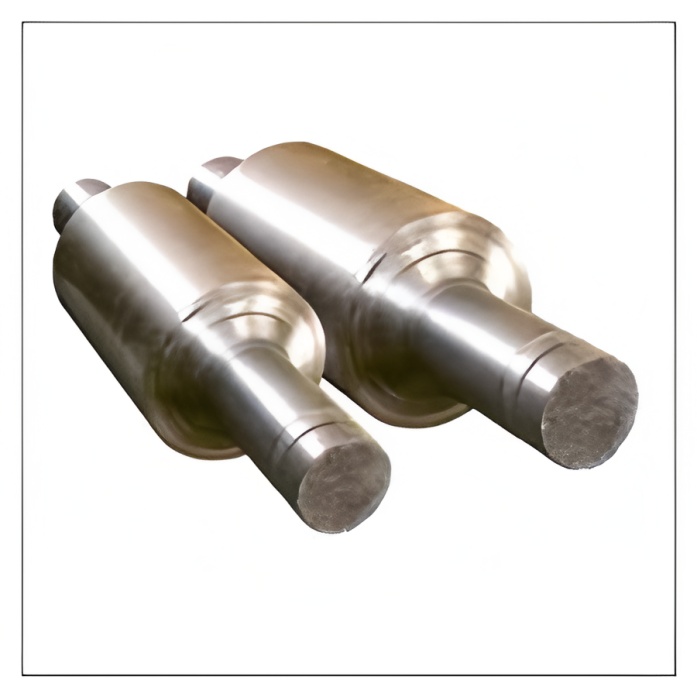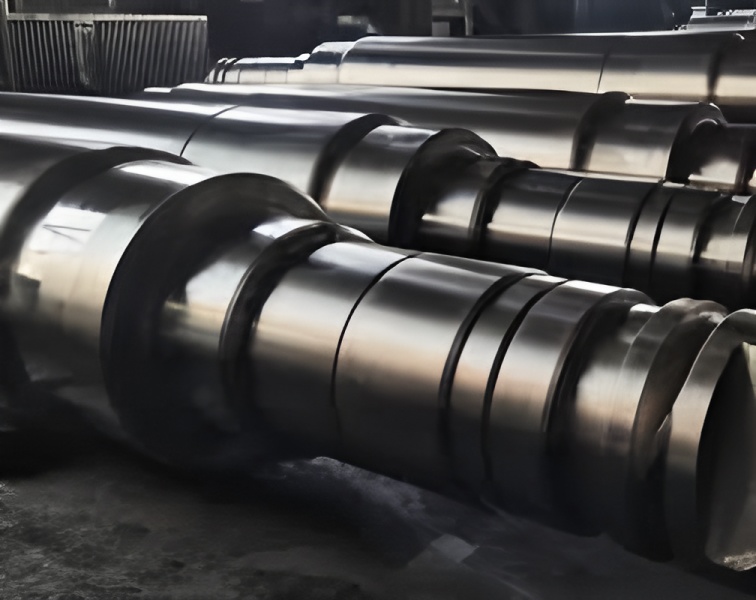Cast high-speed steel rolls are widely used in various applications, including the finishing and roughing sections of hot strip mills, pre-finishing stands in pipe rolling mills, and high-speed wire rod mills, where their advantages are highly evident. From the perspective of steel rolling technology development, enhancing rolled product quality, improving rolling efficiency, and reducing production costs remain the central focus of innovation.
Keywords: HSS rolls, high-speed steel roll technology
Backup Rolls
Analysis of the Key Advantages of High-Speed Steel Rolls
Compared with conventional steel rolls, high-speed steel rolls offer exceptional wear resistance both at room and elevated temperatures. They also exhibit high hardness, excellent red-hardness, and remarkable thermal cracking resistance and accident durability.
Microstructurally, these rolls consist of MC and M₆C alloy carbides embedded within an austenitic matrix. Both MC and M₆C carbides contribute high hardness, while the austenitic matrix ensures thermal stability. Numerous alloying elements participate in the formation of dispersed carbides during tempering, resulting in secondary hardening. This raises the martensite decomposition temperature, further enhancing hardness.
High-speed steel rolls are highly adaptable, improving product quality and extending service life. They are suitable for hot strip continuous rolling finishing stands and the non-scheduled rolling of various strip materials, allowing full utilization of their advantages.
Analysis of Process Improvements in HSS Rolls
Enhancing Roll Core Strength During Heat Treatment
To improve the wear resistance of the outer layer of high-speed steel rolls, increasing the quenching temperature is essential. However, for composite high-speed steel rolls with a high-strength alloy ductile iron core, quenching temperatures exceeding 1250°C can coarsen the core structure or even cause localized melting, reducing core strength and increasing the risk of roll breakage. Although several countries have developed sub-temperature heat treatment processes for HSS rolls, detailed reports are scarce. A new heat treatment method that avoids high-temperature quenching while maintaining high core strength—simple, energy-efficient, and low in pollution—is needed. Surface induction quenching, particularly using a double-inductor process, is a feasible approach for cast composite HSS rolls, offering ease of operation and minimal impact on core strength.

Improving Bonding Strength Between Roll Core and Outer Layer
In traditional centrifugal casting of composite HSS rolls, ductile iron is often used as the core material. However, graphite precipitation in the core and certain elements in the high-speed steel outer layer can lead to chill formation and graphitization degradation at the interface. This increases brittleness and may cause layer separation during use. When using cast steel as the core—which has higher melting points and elongation—fusion defects may occur during pouring, weakening the joint. To address this, introducing an intermediate layer (preferably graphite steel) between the core and the HSS material can improve interfacial bonding and enhance the overall integrity of composite rolls.
Mitigation of Casting Cracks
The high content and variety of alloying elements in HSS rolls reduce thermal conductivity, leading to uneven cooling during casting, elevated residual stress, and element segregation. Phase transformations during solidification further increase stress, raising the risk of cracking. To minimize these defects, molten steel modification is recommended. Solutions include using a dual-layer coating combining heat insulation and refractory materials, or optimizing centrifugal rotation speed during pouring to reduce stress and prevent crack formation.
To meet the stringent demands of modern rolling mills and high-quality steel production, metallurgical engineers have prioritized the development and enhancement of HSS roll technology. This article has outlined the principal advantages of HSS rolls, reviewed current manufacturing processes, and discussed common issues along with corresponding process improvements. It is hoped that these insights will draw further attention and promote continued innovation.


